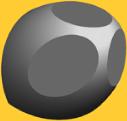Richard M. Christensen |
||
|
||||
Recent Additons |
||||||
Key Junctures |
||
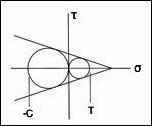 |
||||
General Matters |
||||
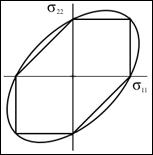 |
||||
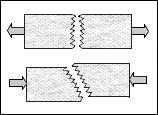 |
||||||||
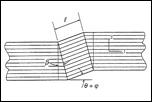 |
||||||||
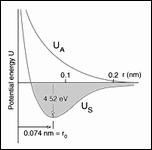 |
||||||||
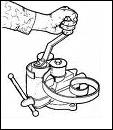 |
||||||||
Can Atomic/Nano Scale |
||||||||
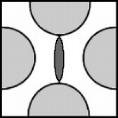 |
||||||
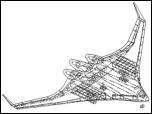 |
||||||
 |
||||||
 |
||||||
 |
||||||||
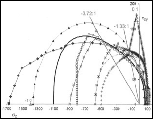 |
||||||
 |
||||||
 |
||||||||
 |
||||||||
 |
||||||
Copyright© 2019 |
||||||
Navigating the Website and Understanding the Discipline
These two images are representative of the context and content of their respective areas of coverage, as explained in the following outline.
All of us are students. We are continually learning new things. This website and a separate book are learning tools in that direction. The subject is the failure of materials and the necessary theoretical machinery needed to describe the failure of homogeneous materials. The book (to be specified later) is for more advanced study and it is here designated as “Understanding the Discipline”.
Although the website and the book are essentially different and completely separate, there is no difference in the quality of effort and composition in either or both of them. Otherwise the differences are as follows.
Website:
The website offers a quick, facile, instantly accessible opening to the subject. It emphasizes particular facets of the overall subject. It is like using a dictionary or encyclopedia to probe a particular interest.
Book:
The book offers a scholarly formalism of the subject. It covers the complete discipline and emphasizes the required basis for a thorough understanding and working knowledge of it.
Before getting into these two individual resources it is helpful to start with an overview and background on the status of the subject of materials failure.
Why Materials Failure Investigation, Failure Analysis, and Failure Theory are Vital and Enduring
Would you be willing to cross a narrow footbridge over a deep ravine that was conceived and constructed by a friendly neighbor in his spare time? In a not greatly different situation, would you have been willing to go up with the Wright brothers on one of their very first experimental “aeroplane” flights? One such early passenger lost his life from a materials related failure and consequent crash with them. In addition to being an aeronautical genius of the highest order, Wilbur Wright was also heroic. Would you or I be so heroic? For most people, prudence and caution would dictate carefully measured answers to such questions and situations, whether real or hypothetical.
Safety has usually been the prime consideration in any new physical project or endeavor. Reliability and dependability usually come in as a close second in priorities. This has transpired not just for hundreds of years but for thousands of years. However, it is only in the past few hundreds of years that the scientific method and approach has been brought to bear on the everlasting problem of materials failure.
Despite the many marvelous and far reaching achievements of physical science, a comprehensive understanding of materials failure has not been among them. This has not been for lack of interest or effort. Many of the most prominent and famous scientists in the past glory age of new and first discoveries took a run at the problem of materials failure. The second or third greatest physicist of all time, James Clerk Maxwell, did so and at least gained a foothold on the problem, but no general solution in the way that he so brilliantly succeeded with electricity and magnetism.
The failure problem has endured. In fact it has endured and been static for so long that there now is a strong skepticism as to the viability of a possible general theory of materials failure. In terms of current educational course offerings and from all the norms of usage, the outlook is not good. Overall, the preponderance of professional opinion on the prospects for improvement is deeply and overwhelmingly negative.
So the field continues to limp along using outdated and demonstrably incorrect failure criteria that came from the distant past ages. The situation has nearly reached the point of culpable negligence. Will it ever be corrected? If not, what will be the consequences? If so, then how long before reform: years, decades, what?
This website and the adjoining information sources are locked onto the proposition that there should be and could be a comprehensive and general theory of materials failure. Scientific integrity demands it. Public safety would welcome and embrace it.
The label failure theory is used in the most precise sense of the term “theory”. In the classical context a theory of behavior is not a true and significant theory unless it has been proven to be irredeemably correct. Otherwise it is just speculation. Then and only then is it capable of fulfilling its primary purpose to project and predict behavior far beyond the region of its calibration from minimal but basic source data. That is the sense in which the term three-dimensional failure theory is used here. But after all this time and history, the failure problem categorically remains wide open and as confusing and confused as ever.
This preamble initiates the entry into this website on failure and toward the discipline of materials failure. It should be a rewarding journey for those interested in and committed to the challenge. And it most certainly is a challenge! Enjoy, progress, and prosper with some new knowledge on materials failure.
Navigating the Website
Although flow charts are often used to describe complex technical procedures or software routines, they are not particularly useful here.
The website is a collection of topics, with each being autonomous within its limited field of view. They can be read in a separate and independent manner and in any order. They are like the individual forms in a pattern leading to directed information on a particular subject.
There is however a binding matrix holding the whole website together. It is the concern with the failure of materials, homogeneous materials.
A sequence of key topics from the website can give a first exposure and a preliminary understanding of the subject of failure under limiting load/stress states. This sequence, as abstracted from the website, is that of the following list. These are the topic headings on the homepage. The Roman Numerals refer to the Section numbers, RSB is the right sidebar and LSB is the left sidebar on the homepage.
- Is It Stress or Strain RSB
- How Do Mises and Tresca Fit In LSB
- Yield and Failure Criteria for Isotropic Materials Sec. II
- The Ductile/Brittle Transition, Gaging Ductility Levels Sec. VII
- Defining Yield Stress and Failure Stress (Strength) Sec. X
- Fracture Mechanics Sec. VIII
- Failure Criteria for Anisotropic Fiber Composites Sec. III
- Completion and Closure on Failure Criteria
for Unidirectional Fiber Composites, Sec. XIV
The first topic is the age old problem of deciding which is the most fundamental, stress or strain (deformation) to be used with failure characterization. The next four topics concern the failure of isotropic materials as a whole, especially taken in this preferred order. These four sections comprise the central focus of the entire website program. Then Section VIII describes fracture mechanics and its essential difference from that of the failure of homogeneous materials. The last two sections in the list concern the generalization from isotropic materials to anisotropic materials failure. This much would give a good start toward learning the subject of materials failure and how to use it.
Beyond the topics on this list, each and every topic on the homepage is appropriate to failure in general and can be approached individually. Try it. Any of them will arouse interest and raise questions that will be relevant and then raise further questions and broader interests. It truly is like exploring new territory.
For example, take a look at Section XVII. It is all about the element carbon and its significance for materials. Carbon is incredible! It has the most secure atom to atom bonding of any of the solids forming elements in the Periodic Table. It practically is the miracle material. You will be charmed by carbon, intrigued by carbon and left eager to learn more about it and how to use it. Carbon is the #1 drawer in the “high tech” materials tool chest.
Pick any other topic at random on the homepage, open it and be surprised. Examine it, agree or disagree. Decide what to do next about learning more of it.
Understanding the Discipline: The Book and Six Papers
The effort and commitment to understand the discipline of materials failure is anchored by a book and some papers, all listed below. The book was written well after the website was established and had matured. The book as a study guide involves mastery of the subject of materials failure. It has a sequential, step by step approach where each new step builds upon the consummation of the previous one.
Although the book is advanced, it is followed by a series of even more advanced papers. These papers are concerned with the research oriented developments that firmly and finally complete the comprehensive theory of materials failure.
The archived book and papers sources are:
- The Theory of Materials Failure (2013), Oxford University Press, Oxford, U. K.
- “Failure Mechanics – Part I: The Coordination Between Elasticity Theory and Failure Theory for all Isotropic Materials,” (2014), J. Applied Mechanics, v. 81, 081001-1.
- “Failure Mechanics - Part II: The Central and Decisive Role of Graphene in Defining the Elastic and Failure Properties for all Isotropic Materials,” J. Applied Mechanics (2014), v. 81, 111001-1.
- “Failure Mechanics – Part III: A Call to Service With Solid Mechanics,” (2015), J. Applied Mechanics, v. 82, 041001-1.
- “A New Theory of Strain Hardening and its Consequences for Yield Stress and Failure Stress,” (2015), Computers, Materials, and Continua, v. 47, 45-63.
- “Evaluation of Ductile/Brittle Failure Theory and Derivation of the Ductile/Brittle Transition Temperature,” (2016), J. Applied Mechanics, v. 83, 021001-1.
- “The Theoretical Measure of the Ductility of Failure for all Isotropic Materials in all States of Stress,” (in preparation).
The author of the book and these papers is R. M. Christensen.
Generally speaking, there are two kinds of theories of physical behavior, there are rigorous theories and there are frivolous theories. Concerning the latter, one can always find some obscure and questionable data to “prove” just about any theory no matter how far out it may be. Conversely one can always “cook up” some far out theory to fit some particular data, however peculiar and obscure it may be. The only kind of theory that endures is the firmly grounded, rigorous theory that is supported by absolutely uncontestable observational data. That has always been the critical measure of acceptability in the references cited above.
Going further, in all history there are only three field theories that have proven to be rigorous and universal. These are (i) the theory of elasticity for solids, (ii) the Navier-Stokes theory of fluids, and (iii) Maxwell’s theory of electro-magnetism. There are many other perfectly acceptable theories of physical behavior of one type or another but they all fall short of these three in the completeness and usefulness category.
The present theory of failure behavior is not just a free standing entity or a loose analogy to the elasticity formalism. Elasticity theory and this failure theory adjunct to elasticity theory are intricately and irretrievably related. So much so that they actually are parts of the same discipline of behavior. It is that of the complete physical behavior (including failure) of elastic materials and it is of utmost importance in this modern technological age. Plasticity theory and many forms of damage will be found to be sub-parts of this overall theory. It all unfolds in the study of the theory of materials failure.
The compass icon evokes exploring new territory. It usually raises more new questions rather than providing complete and final answers. Nevertheless it always reveals new passages to be further explored. It represents commitment and progress.
Navigating the Website


Leonardo’s drawing of the Vitruvian Man symbolizes the all encompassing outreach for truth and enlightenment. This occurs through human creativity and ingenuity. It strives to be absolute and uncompromising. With Isaac Newton and Leonardo da Vinci as the guiding principals, it can succeed.
Understanding the Discipline
